 Click the following link for a safe PDF copy: Dr. Sāmī al ‘Uraydī — These Are the Cajolers and They Will Not Free al-Āqsā Nor Will They Return to Jerusalem
Click the following link for a safe PDF copy: Dr. Sāmī al ‘Uraydī — These Are the Cajolers and They Will Not Free al-Āqsā Nor Will They Return to Jerusalem
____________
To inquire about a translation for this release for a fee email: [email protected]
Category: Usāmah Bin Lāden
New video nashīd from Ḥarakat al-Shabāb al-Mujāhidīn: "Dedicated To The Martyr Shaykh Usāmah Bin Lādin"
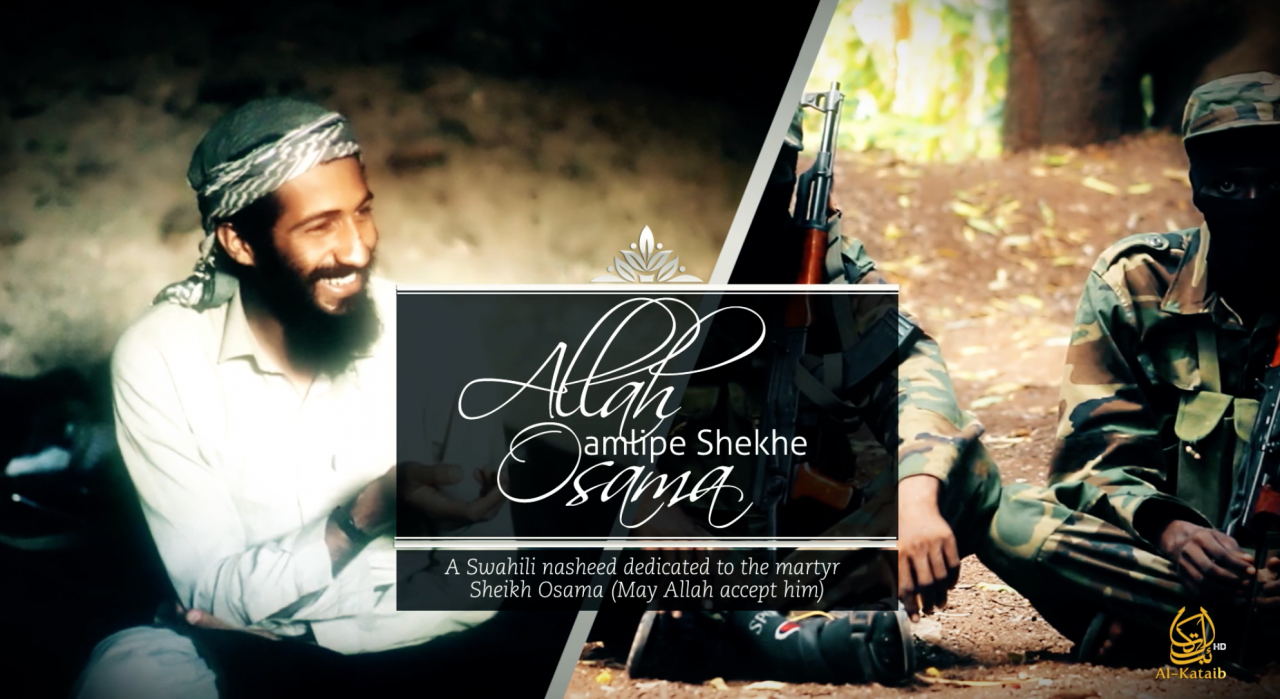
____________
To inquire about a translation for this video nashīd for a fee email: [email protected]
New video message from al-Qā’idah’s Ḥamzah Bin Usāmah Bin Lāden: "We Are All Usāmah"

__________________
To inquire about a translation for this video message for a fee email: [email protected]
New video message from Shaykh Abū 'Abd Allah al-Muhājir: "Miracles of the Mujāhidīn: Afghanistan – The Soviet Invasion, Episode One: Shaykh Usāmah Bin Lādin"
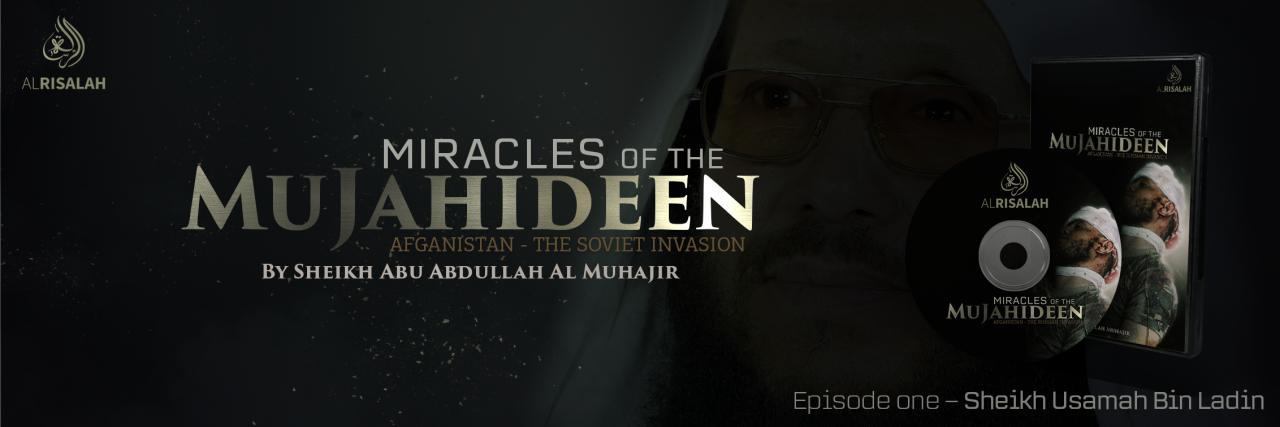
___________________
To inquire about a translation for this video message for a fee email: [email protected]
New release from Abū Akram Hishām: "Messages From the Mujāhid's Notebook: Shaykh Usāmah and the Story of His Support For the Algerian Jihād"
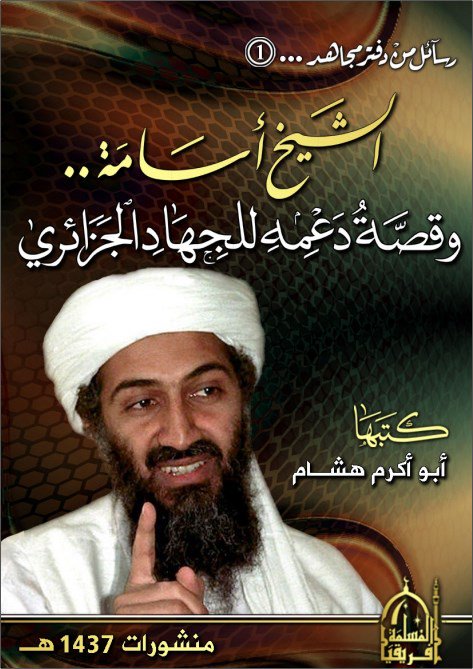
Click the following link for a safe PDF copy: Abū Akram Hishām — “Messages From the Mujāhid’s Notebook- Shaykh Usāmah and the Story of His Support For the Algerian Jihād”
________________
To inquire about a translation for this release for a fee email: [email protected]
New video message from al-Qā’idah in the Indian Subcontinent: "The Call of Faith: The Battle of Shyakh Usāmah"

________________
To inquire about a translation for this video message for a fee email: [email protected]
New video message from al-Qā’idah in the Indian Subcontinent: "The Battle of Shaykh Usāmah: About the Attack Upon the American Navy Ship"

__________________
To inquire about a translation for this video message for a fee email: [email protected]
As-Saḥāb Media presents a new video message from Dr. Ayman al-Ẓawāhirī: “Days With The Imām #7"
UPDATE 9/15/15 10:18 AM: Here is an English translation of the below Arabic video message:
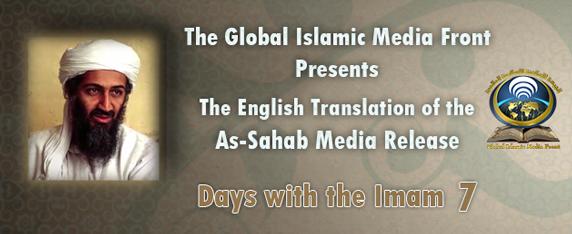
Click the following link for a safe PDF copy: Dr. Ayman al-Ẓawāhirī — “Days With The Imām #7″ (En)
_____________________
—
NOTE: Click here for previous parts in this series: #6, #4, #3, #2, and #1.
—

________________
New release from The Jihad Media Elite: "All of the Messages and Directives of the Mujāhid Shaykh Usāmah Bin Lādin"
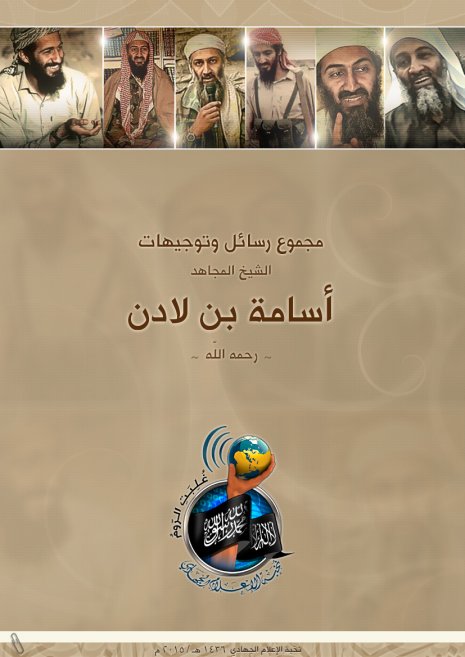
Click the following link for a safe PDF copy: The Jihad Media Elite — “All of the Messages and Directives of the Mujāhid Shaykh Usāmah Bin Lādin”
________________
To inquire about a translation for this release for a fee email: [email protected]
GUEST POST: The Three Functions of UBL's “Greater Pledge” to Mullah Omar (2001-2006-2014)
NOTE: As with all guest posts, the opinions expressed below are those of the guest author and they do not necessarily represent the views of this blogs administrator and does not at all represent his employer at the Washington Institute for Near East Policy.
Jihadology.net aims to not only provide primary sources for researchers and occasional analysis of them, but also to allow other young and upcoming students as well as established academics or policy wonks to contribute original analysis on issues related to jihadism. If you would like to contribute a piece, please email your idea/post to azelin [at] jihadology [dot] net.
Click here to see an archive of all guest posts.
—
The Three Functions of UBL’s “Greater Pledge” to Mullah Omar (2001-2006-2014): Attract Jihadi Volunteers, Legitimize the Taliban as Guardians of the Caliphate and Denounce IS-leader al-Baghdadi
By Anne Stenersen and Philipp Holtmann
Introduction
In the summer of 2014, al-Qaida leadership dug out an old, almost forgotten recording, in which its late leader Usama bin Laden confirms his pledge of obedience to the Taliban. The republication is supposed to nullify the investiture of Abu Bakr al-Baghdadi as caliph of the Islamic State in June 2014, indicating that he broke his pledge to the Taliban via his alleged subordination under al-Qaida. This narrative, which is supposed to strengthen the position of the Taliban has appeared in several al-Qaida publications and writings since the rise of the rival organization the Islamic State of Iraq in 2006. Yet, the pledge was initially given by a representative of Usama bin Laden to Mullah Omar in 1999 and had yet a different purpose: It was supposed to quell internal power struggles among the jihadi groups in Afghanistan, rather than being a real determinant of the Arab-Taliban relationship. In addition, the initial function of the pledge may have been an attempt to dissolve al-Qaida erstwhile from central authority and responsibility for the jihadi movement. Even more importantly, it should prevent other foreign jihadi groups in Afghanistan from assuming this leadership responsibility. By 2001, Usama bin Laden himself confirmed the pledge to Mullah Omar, additionally using the pledge in Arabic propaganda to legitimize the status of the Taliban regime as a “true Islamic State” with the goal to lure more jihadi volunteers from the Gulf to Afghanistan. When the “Islamic State of Iraq” in 2006 began to strive for global jihadi authority, al-Qaida used the pledge to claim that the Taliban were the legitimate guardians of the caliphate.
Context
Pledges of investiture and of obedience are the most important mechanisms to create Islamic governance, on which all other Islamic state-structures and institutions hinge. Pledges, first and foremost, regulate the delegation of power, authority and leadership through elections, investiture and alliance-building. In older Islamic political theory, “bay’at” can be sworn to local commanders (umara‘) and political leaders (a’immah) of governorates (wilayat) of the Islamic caliphate. But these are “smaller pledges,” because local commanders in turn have to subordinate under the central command of the caliph, as much as affiliates are bound through their pledges to local rulers to the greater authority of the caliph. Thus, the more authoritative pledge is the “greater bay’ah” to the caliph, which establishes the nexus of centralized politico-religious-military leadership (al-khilafa, al-imamah al-‘uzmah, amir al-mu’minin), which is the ideal of Islamic governance. The pledge-giving ritual by al-Qaida and other jihadi groups, some of which aspire global dominance, is strongly influenced by this differentiation between “greater” and “smaller” pledges.
The last official Islamic caliphate was abolished by the Turks in 1924, followed by a period of rapid modernization, modern state building and change of governance and election mechanisms in the Arab world. In the absence of a caliphate, authority in jihadi groups was mostly delegated through smaller pledges. From the 1960s until the 1980s, many jihadi groups did not reckon that they had the capacities or the legitimacy to install their leader as caliph, and therefore refrained from using “the greater pledge.” Instead many groups established local “emirates” by giving “smaller pledges” to their leaders. During the 1990s, a number of jihadi and fundamentalist groups announced the establishment of short lived caliphates.1 In the early 2000s, al-Qaida approached the concept of the “greater pledge” very carefully. The organization invested the Taliban leader Mullah Omar with this pledge, yet, did not grant him the full authority of a caliph, instead putting forward the argument that he was merely a guardian of the caliphate. This argument gained traction when the Islamic State of Iraq in 2006 uttered its aspiration to reestablish the caliphate and sideline al-Qaida. The most recent example of the jihadi debate around “greater” and “smaller” pledges is al-Qaida’s attempt in 2014 to present the Taliban commander Mullah Omar as the bearer of the “greater pledge,” and thus delegitimize the IS-caliphate under Abu Bakr al-Baghdadi.
Bin Laden’s pledge to Mullah Omar in 2001
The story of bin Laden’s pledge to Mullah Omar in 2001 has never been fully told. The reason being lack of access to primary sources confirming the nature and extent of the pledge. The dominant narrative so far has been that of Mustafa Hamid (aka Abu Walid al-Masri), an Egyptian Islamist who was an active member of the Arab militant environment in Afghanistan in the 1990s. Hamid claimed that he was the first Arab militant in Afghanistan to pledge allegiance to Mullah Omar in 1998. He then tried to persuade bin Laden to do the same. Bin Laden was hesitant, but in the end, he agreed to letting Mustafa Hamid give Mullah Omar the pledge on bin Laden’s behalf. It seems, however, that al-Masri himself had not pledged allegiance to Bin Laden and was not a formal member of al-Qaida. He could not really act as a legitimate deputy. This “pledge by proxy” was later interpreted as symptomatic of the weak relationship between the Taliban and bin Laden, where the pledge was nothing but a “façade of allegiance.”2
Given the rather turbulent relationship between bin Laden and Mullah Omar in the late 1990s – with bin Laden repeatedly ignoring, and at times outright violating, Mullah Omar’s instructions – this interpretation makes sense. However, there is more to the story about bin Laden’s pledge. Other primary sources now show that al-Qaida actively made use of the pledge for propaganda purposes as early as 2001. In April 2001, bin Laden publically announced his pledge to Mullah Omar in a videotaped speech that was broadcast on a Deobandi conference in Pakistan and subsequently on al-Jazeera.3 In June 2001, bin Laden again spoke about his pledge to Mullah Omar, confirming it was a “greater pledge” (bay’a ‘uzma) and not just a temporary one, to a group of followers in Afghanistan.4 It is the videotape of the latter event that was re-published by al-Qaida in 2014.
Overall, these primary sources are in line with Mustafa Hamid’s account. They confirm that bin Laden had given Mullah Omar some kind of pledge by the autumn of 2000.5 Quite possibly, it was a “pledge by proxy” as there are no other eyewitness accounts of a pledge-giving ceremony involving the two leaders. Given the course of events in Afghanistan it is obvious that bin Laden’s pledge was never meant to signify any real subordination to Mullah Omar. However, the new sources suggest that the pledge was more than a symbolic gesture to please the Taliban leader. Al-Qaida actively used the pledge for communicative purposes, mainly towards Arabs in Afghanistan, but also towards the wider world. This sheds new light on the role of al-Qaida in Afghanistan as well as its strategic priorities at the time.
Bin Laden’s first pledge to Mullah Omar must be seen in its proper context. As confirmed by Mustafa Hamid and others, in 1999 al-Qaida was part of a competitive environment of Arab and non-Arab jihadi groups in Afghanistan.6 There were nationalist groups, like the Egyptian al-Gama’a al-Islamiyya, that were mainly interested in staging revolution in their home country and that used Afghanistan as temporary refuge only. And there were “ummah-oriented” groups who did not believe in nationally focused agendas, instead advocating unity among all Muslims. While their strategic priorities diverged, they were generally interested in cooperating with the Taliban regime and saw Afghanistan as the starting point for a regional or global Islamic revolution.
Al-Qaida belonged to the “ummah-oriented” cluster of actors but had to compete for the Taliban’s favours with independent Arabs such as Abu Mus’ab al Suri, and non-Arab groups such as the Islamic Movement of Uzbekistan, led by Tahir Yuldashev. Al-Qaida had access to far more resources than the independent Arab actors, but could hardly compete with the manpower and military discipline of IMU’s forces.
Bin Laden’s pledge to Mullah Omar in 1999 should be seen as an expression of this internal competition. Al-Qaida was working hard to gain influence within the Taliban and to become the leading actor among the foreign fighting groups. When important rivals such as Tahir Yuldashev pledged allegiance to Mullah Omar in late 1998, bin Laden probably had no choice but to follow suit.7 Bin Laden’s main rival, Abu Mus’ab al-Suri pledged allegiance to Mullah Omar in early 2000.8 Al-Suri had been an ardent supporter of Mullah Omar since 1998, so it
